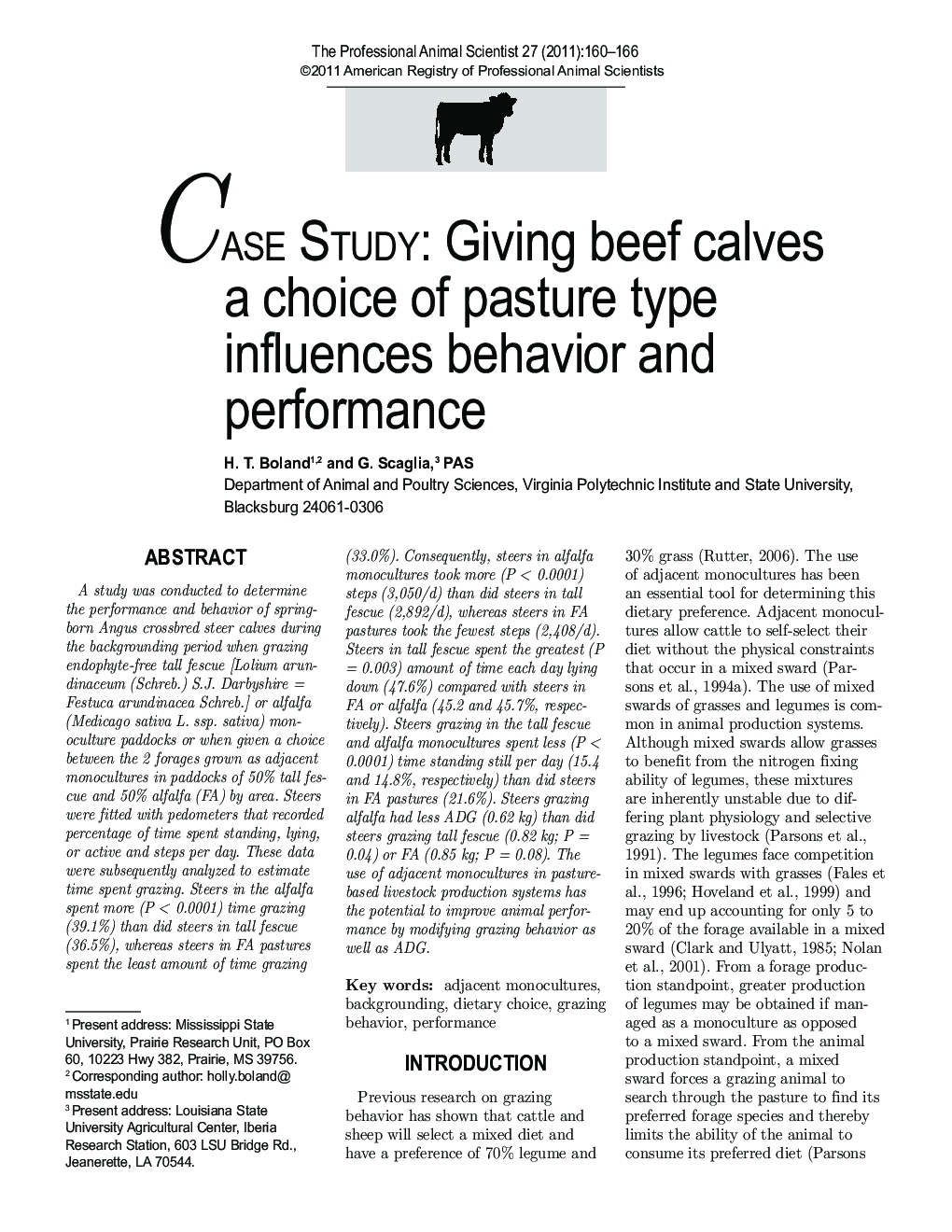| Article ID | Journal | Published Year | Pages | File Type |
|---|---|---|---|---|
| 2454147 | The Professional Animal Scientist | 2011 | 7 Pages |
Abstract
A study was conducted to determine the performance and behavior of spring-born Angus crossbred steer calves during the backgrounding period when grazing endophyte-free tall fescue [Lolium arundinaceum (Schreb.) S.J. Darbyshire = Festuca arundinacea Schreb.] or alfalfa (Medicago sativa L. ssp. sativa) monoculture paddocks or when given a choice between the 2 forages grown as adjacent monocultures in paddocks of 50% tall fescue and 50% alfalfa (FA) by area. Steers were fitted with pedometers that recorded percentage of time spent standing, lying, or active and steps per day. These data were subsequently analyzed to estimate time spent grazing. Steers in the alfalfa spent more (P < 0.0001) time grazing (39.1%) than did steers in tall fescue (36.5%), whereas steers in FA pastures spent the least amount of time grazing (33.0%). Consequently, steers in alfalfa monocultures took more (P < 0.0001) steps (3,050/d) than did steers in tall fescue (2,892/d), whereas steers in FA pastures took the fewest steps (2,408/d). Steers in tall fescue spent the greatest (P = 0.003) amount of time each day lying down (47.6%) compared with steers in FA or alfalfa (45.2 and 45.7%, respectively). Steers grazing in the tall fescue and alfalfa monocultures spent less (P < 0.0001) time standing still per day (15.4 and 14.8%, respectively) than did steers in FA pastures (21.6%). Steers grazing alfalfa had less ADG (0.62 kg) than did steers grazing tall fescue (0.82 kg; P = 0.04) or FA (0.85 kg; P = 0.08). The use of adjacent monocultures in pasture-based livestock production systems has the potential to improve animal performance by modifying grazing behavior as well as ADG.
Related Topics
Life Sciences
Agricultural and Biological Sciences
Animal Science and Zoology
Authors
H.T. Boland, G. PAS,
